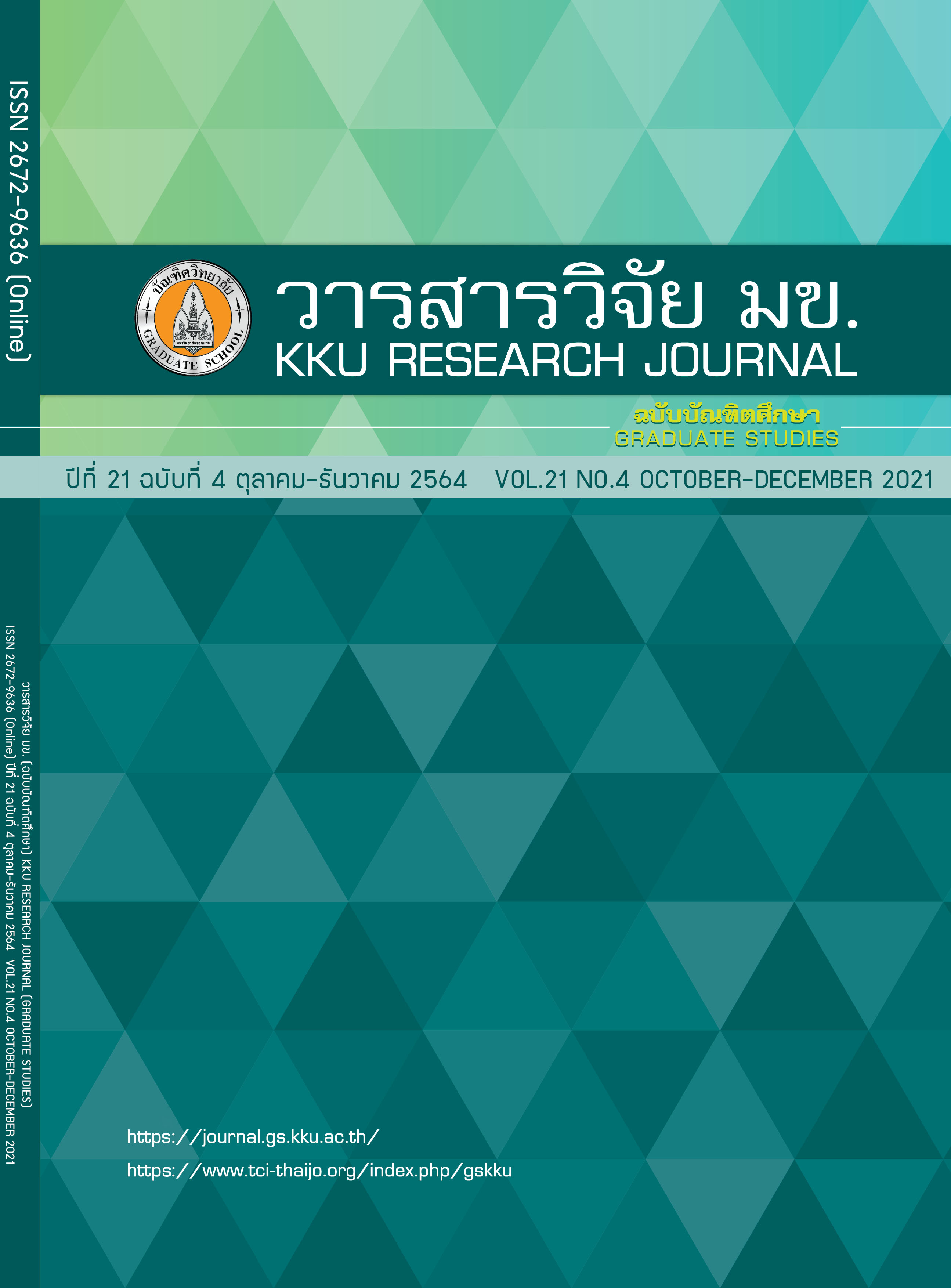Study of Factors Influencing Intention to Drive a Wrong-way of Motorcyclists
Keywords:
Wrong-way driving behavior, Motorcyclist, Psychological factorAbstract
The objective of this study is to study the factors influencing the intention and behavior of Wrong-Way Driving (WWD) of motorcyclists. This study developed the questionnaire by applying the Theory of Planned Behavior (TPB) to explore psychological direct factors relating to WWD. This study collected 416 samples and applied The Structure Equation Model (SEM) to analyze and determine factors significantly influencing the WWD intention. The study results found that attitude, subjective norm, and perceived behavior control influence significantly and positively to WWD intention and behavior. Therefore, to prevent the WWD behavior of motorcyclists, it should establish the measures to educate a positive attitude against WWD, especially education and attention by close and important persons of drivers and to enforce traffic law effectively.
References
World Health Organization (WHO). Global status report on road safety. [Online] [Retrieved May 29,2020]. Available from: https://extranet.who.int/roadsafety/death-on-the-roads/
The Office of Transport and Traffic Policy and planning; Ministry of Transport. Road accident analysis report; [Online] [Retrieved October 11,2020]. Available from http://www.otp.go.th/uploads/tiny_uploads/PDF/2562-09/25620916Accident%20report2561%20_OTP.pdf
The Office of the Council of State. Office of the Council of State. Road traffic act. [Online] [Retrieved May 29, 2020]. Available from http://kmcenter.rid.go.th/kmc17/data/Knowledge%2017/Legal/law_traffic2522.pdf
Kemel E. Wrong-way driving crashes on French divided roads. Accident Analysis Prevention. 2015,75: 69-76.
Ponnaluri RV. The odds of wrong-way crashes and resulting fatalities: a comprehensive analysis. Accident Analysis Prevention. 2016; 88: 105-116.
Cooner SA, Ranft SE. Wrong-way driving on freeways: problems, issues, and countermeasures. Transportation Research Board; 2008; 1-23.
Scaramuzza G, Cavegn M. Wrong-way drivers: extent – interventions. in: paper presented at: The European Transportation Conference; 2007 Oct 17-19; The Netherlands; 2007
Das S, Dutta A, Jalayer M, Bibeka A, Wu L. Factors influencing the patterns of wrong-way driving crashes on freeway exit ramps and median crossovers: Exploration using ‘Eclat’ association rules to promote safety. Int J Transportation Science Technology. 2018; 7(2): 114-123.
Brevoord GA. Supplementary measures taken in the Netherlands with particular reference to roads; the selection of supplementary measures. Wrong-Way Driving Communications; 1984.
Ajzen I. The theory of planned behavior. Organizational behavior and human decision processes; 1991: 50(2): 179-211.
National Transportation Safety Board. Highway Special Investigation Report: Wrong Way Driving; 2013.
Phetcharat S, et al. Influencing factors on driving against traffic flow behavior: a case study of Nakhonnayok Province. Srinakharinwirot Engineering Journal. 2016; 11(2): 141-152. Thai
Suangka K. A study of young driver behavior that affect the risk of accidents from the motorcycle; 2016 Jan. Research Report No.: SUT7-704-58-12-44. Thai.
Jiang K, Yang Z, Feng Z, Yu Z, Bao S, Huang Z. Mobile phone use while cycling: A study based on the theory of planned behavior. Transportation Research Part F Psychol Behavior. 2019, 64: 388-400.
Shi J, Bai Y, Tao L, Atchley P. A model of Beijing drivers’ scrambling behaviors. Accident Analysis Prevention. 2011; 43(4): 1540-1546.
Zhou H, Romero SB, Qin X. An extension of the theory of planned behavior to predict pedestrians’ violating crossing behavior using structural equation modeling. Accident Analysis Prevention. 2016; 95:417-424.
Tiyabutr T. Application of the theory of planned behavior to study the Factors affected red-light running intention: case of intersections located in Khon Kaen University [MEng thesis]. Khon Kaen: Khon Kaen University; 2015. Thai.
Tankasem P. Psychological factors influencing speeding behavior of drivers in urban road environments [PhD thesis]. Khon Kaen: Khon Kaen University; 2018. Thai.
Kumphong J. A study of risk behaviors and helmet use intentions among motorcyclists [PhD thesis]. Khon Kaen: Khon Kaen University; 2019. Thai.
Hair JF, Black WC, Babin BJ, Anderson RE, Multivariate data analysis a global perspective. 7th ed. New Jersey: Pearson; 2010.



